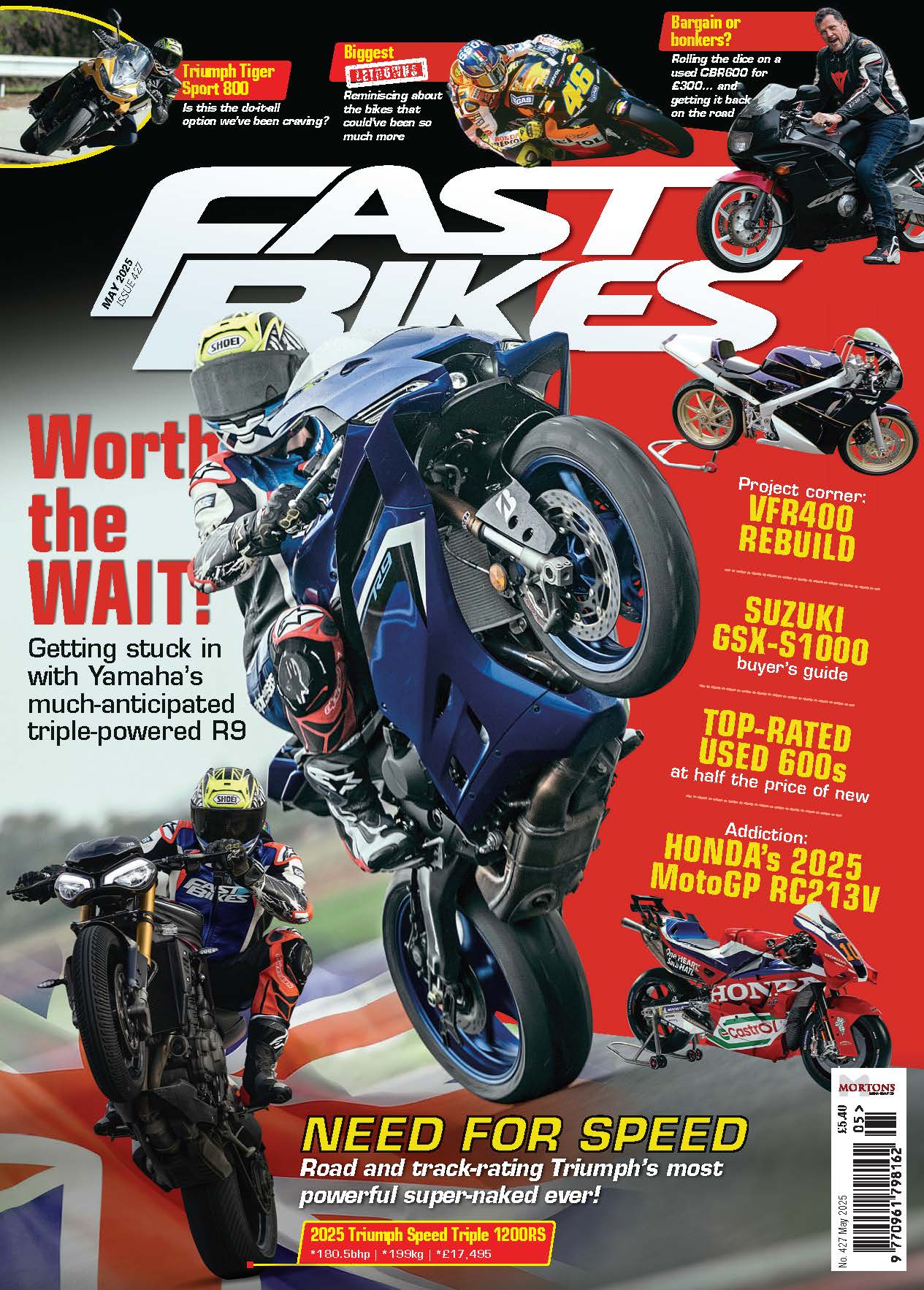Phil Plater from Dunlop said to me, “I won’t ask you to write nice things, just tell the truth.” That’s the mark of a man confident in his product, and with good reason as it turns out.
The D211GP is a brand new tyre for the ’08 season, following a long line of hugely successful Dunlop Supersport hoops: 209, 208, 207, 364. Although the advent of control tyres has reduced Dunlop’s presence, especially this year as they were forced out of British Superbikes, they’re still doing plenty of winning in AMA and the Australian championships. They were first over the line in all four races at Daytona in March. The D211GP filled the Supersport podium.
Technical innovations include new profiles, anti-chatter sidewall design, revised sizes, and new compounds. The familiar-looking pattern uses Dunlop’s ‘cosecant curve’ design to manage tread shuffle and wear. The rear uses the zero degree N-Tech belt over the usual JLB construction to control tyre growth and stability.
As you’d expect, both ends are dual compound. Instead of the soft edges we’re used to in ‘fast road’ tyres, here the majority of the tyre is soft, with a medium compound strip in the centre for the hardest acceleration and braking. This firmer strip actually runs under the rest of the width of the tyre, aiding tread stability for the softer shoulder.
It gets really clever at the back where the tread is laid in seven strips. It’s still two compounds, but the soft shoulders are each split down the middle by a triangular shaped reinforcing band. Think of it like a bulkhead, improving stability by preventing forces travelling through the full width of the shoulder.
I used the new D211GP on my Suzuki GSX-R1000 K4 Powerbike at Pembrey for rounds 10 and 11 of the ThundersportGB series. I liked them immediately.
Recommended pressures are very low, and need to be taken with the tyres screaming hot on the warmers right before you go out. Set the front to 33psi, and the rear to 21. Dunlop say that they sometimes go even lower at the rear. They feel completely normal though, because the carcass does the work instead of the air. You’d never notice the difference in pressure.
The character of the D211GP is very neutral and accessible. It takes very few laps to figure them out and start pushing. In my first session on them I posted the third fastest time, then went fractionally quicker in second qualifying but slipped to fourth, netting my first front row start of the year. If that isn’t a good indicator of a very good and useable tyre, I don’t know what is.
The reason I’m testing race tyres in racing and on a kick arse bike, is because that’s what they’re made for and you can’t hope to get the most out of tyres this good using a road bike and a trackday. You also need more laps than you can get from a single pair. A race weekend and three sets is ideal.
By the end of the event I was in love with the Dunlops. You get big, fat, secure grip from both ends. I found my toes were scuffing the ground, despite lofty rearsets, for the first time. Lean angles and corner speeds were high. Drive out of corners was immense, the 211s soaking up 180bhp without complaint. When the limit is reached, you get a month’s notice and a very gradual slide. Given that in racing you need to be sliding to some extent out of every corner, or you’ll be slow, this is very useful.
Better yet, the GPs keep driving hard for ages after they start sliding, even at the end of an 18-lap race. They don’t overheat, and the wear rate is the best I’ve seen, which is remarkable given that Pembrey is known to be abrasive and you spend a long time on the side of the tyre.
I couldn’t tell you which of the many stability-oriented technologies may deserve credit over any other, but these tyres are remarkably composed. Trail-braking doesn’t phase the front at all, even into Pembrey’s tight hairpin, and the rear is outstanding under power with no perceptible tread shuffle.
They certainly outclass the Pirellis and Bridgestones in this respect. I was racing guys on slicks, and felt no disadvantage in traction for the first time this year. It’s no coincidence that my first trip to the podium came on the weekend when I was on the best tyres I’ve yet used. GP1 and 600 series leader, and five-times winner during the Pembrey event, Gary May, is also on D211GPs and loves them. These are the best Supersport tyres around right now.
Wilko
Contact: Dunlopmotorcycle.co.uk
Price: around




